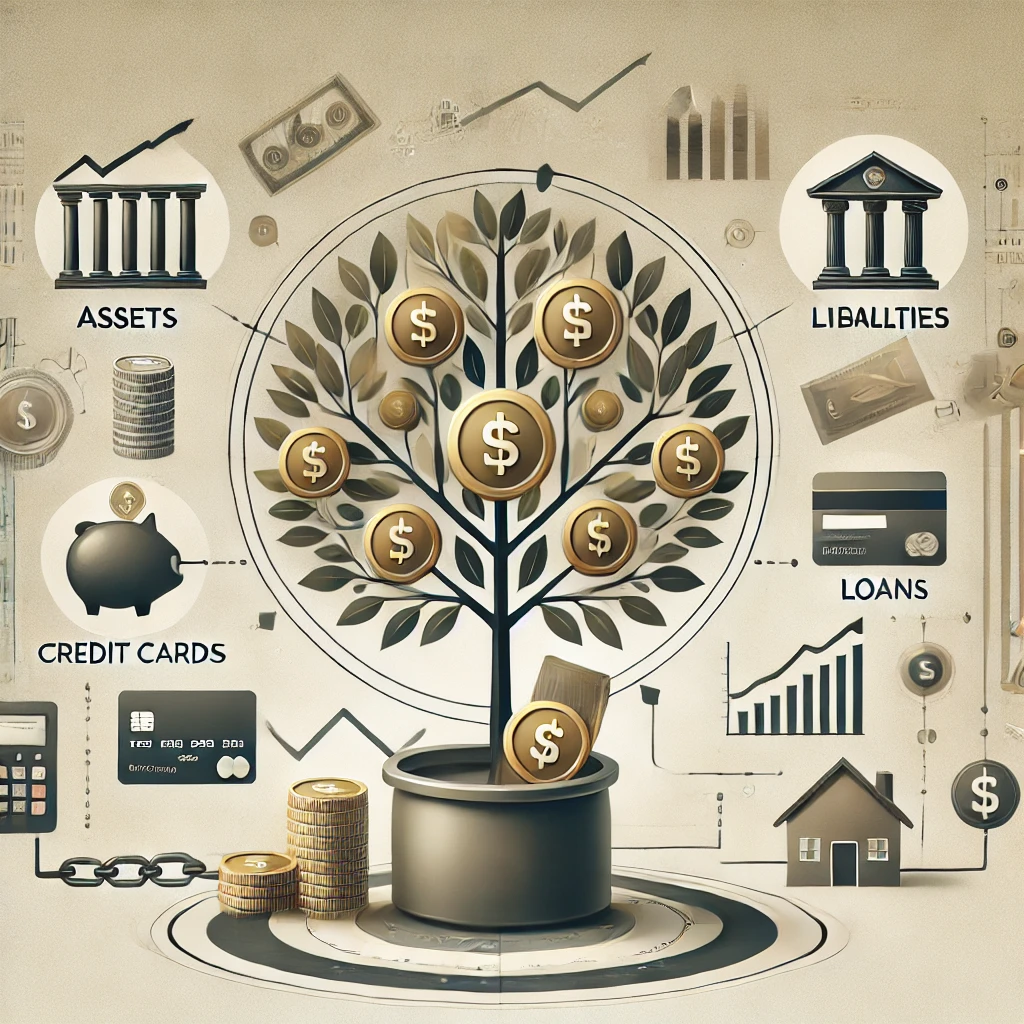In personal finance, understanding the concepts of assets and liabilities is crucial for building wealth and achieving financial independence. These terms form the foundation of financial literacy and play a significant role in determining your net worth. In this article, we’ll explore the definitions, differences, and examples of assets and liabilities, along with tips on how to manage them effectively.

What Are Assets?
Assets are resources that have economic value and can generate income, increase in value, or provide other benefits over time. Simply put, assets are what you own. They can be divided into several categories:
1. Current Assets:
- Cash and cash equivalents
- Accounts receivable
- Short-term investments
2. Fixed Assets:
- Real estate (e.g., your home, rental properties)
- Vehicles (if they hold value)
- Equipment and machinery
3. Financial Assets:
- Stocks and bonds
- Mutual funds and ETFs
- Retirement accounts (e.g., 401(k), IRA)
4. Intangible Assets:
- Patents
- Trademarks
- Goodwill (in a business context)
Assets can also be categorized as income-generating (e.g., rental properties) or non-income-generating (e.g., a personal car). Focusing on acquiring income-generating assets is a key principle of wealth building.
What Are Liabilities?
Liabilities are obligations or debts that you owe to others. They represent what you owe rather than what you own. Liabilities can also be categorized into different types:
1. Current Liabilities:
- Credit card balances
- Utility bills
- Short-term loans
2. Long-Term Liabilities:
- Mortgage loans
- Student loans
- Car loans
Liabilities often come with interest, meaning the longer they remain unpaid, the more they can cost you. Reducing high-interest liabilities is an essential step in improving financial health.
The Relationship Between Assets and Liabilities
The relationship between assets and liabilities is captured by your net worth, which is a measure of your financial health. The formula is simple:
Net Worth = Total Assets – Total Liabilities
A positive net worth indicates that your assets exceed your liabilities, while a negative net worth means the opposite. To achieve financial stability, aim to grow your assets while minimizing liabilities.
Examples of Assets and Liabilities
Assets:
- A home that appreciates in value
- Dividend-paying stocks
- A rental property generating monthly income
- Savings in a high-yield account
Liabilities:
- A mortgage on your home
- Credit card debt with high interest rates
- An auto loan with monthly payments
- Student loans accruing interest
Tips for Managing Assets and Liabilities
- Build a Strong Asset Base:
- Invest in appreciating assets such as real estate and stocks.
- Diversify your investments to reduce risk.
- Increase savings to create a financial cushion.
- Reduce Liabilities:
- Pay off high-interest debt as quickly as possible.
- Avoid taking on unnecessary loans or credit.
- Refinance existing loans to secure lower interest rates.
- Track and Monitor:
- Regularly calculate your net worth to track progress.
- Use financial tools or apps to monitor your assets and liabilities.
- Focus on Cash Flow:
- Prioritize assets that generate passive income.
- Avoid liabilities that drain your cash flow, such as expensive car loans.
- Seek Professional Advice:
- Consult financial advisors for strategies tailored to your goals.
- Learn about tax advantages for managing certain assets and liabilities.
Final Thoughts
Understanding and managing assets and liabilities is essential for achieving financial success. By focusing on acquiring income-generating assets and reducing high-interest liabilities, you can steadily increase your net worth and secure your financial future. Start today by evaluating your current financial situation and taking steps to optimize it. Remember, the journey to financial independence begins with knowledge and disciplined action.
